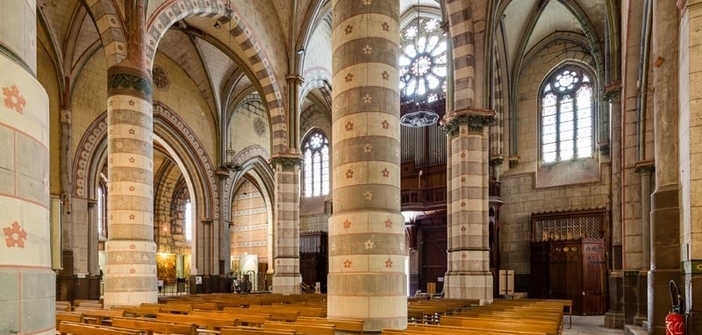Digne is the city of two cathedrals: Saint Jerome and Notre Dame du Bourg. It is the latter that we will be focusing on. It is the oldest.
Excavations have uncovered the foundations of a church from the 5th and 6th centuries. Modifications were made during the Carolingian period. Later, in the 11th and 12th centuries, the bell tower and, following a fire, the cathedral were reconstructed.
From the end of the 12th to the beginning of the 13th century, the new building was erected. Papal Bulls from 1180, 1184, and 1221 attest to the construction of an important church. Notre Dame du Bourg was consecrated on July 15, 1330, by Bishop Elzear of Villeneuve. Five years later, this same prelate added a chapel dedicated to Saint Elzear, disrupting the balance of the Latin cross. Today, it serves as the sacristy.
In the 14th century, the installation of tombs raised the floor of the cathedral. The turmoil of the religious wars and the remoteness of Notre Dame du Bourg led to it being gradually abandoned by the faithful. Saint Jerome was then built on Saint Charles Hill, right next to the bishop’s seat. Its construction took place from 1490 to 1510 under the direction of Bishop Antoine de Guiramand.
Nevertheless, Notre Dame du Bourg was not abandoned. The philosopher and mathematician Pierre Gassendi (1592–1655) noted in his work on Digne in the 17th century that the old cathedral still served for worship. Numerous restoration efforts were undertaken, and the most recent at the end of the 20th century restored its former glory.
This cathedral is a beautiful example of Romanesque architecture. One of the bishops of Digne who participated in its development had a decisive influence on its architecture. In 1184, Monsignor Guigues de Revel, a member of the Order of Chalais, closely linked with the Cistercians, notably imposed a flat chevet and a transept.
Like most structures built over several centuries, Notre Dame du Bourg begins with Romanesque art and reveals certain forms of Gothic art. This cathedral, at the gates of Digne, is already in the countryside, and that is one of its charms.
Thierry Jan


